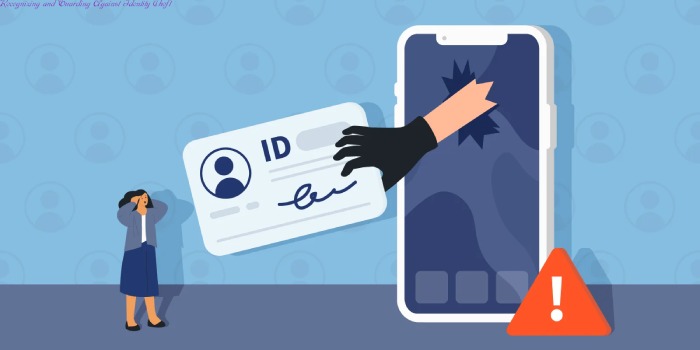Recognizing and Guarding Against Identity Theft

Recognizing and Guarding Against Identity Theft
With the increasing sharing and storing of personal information online in the digital era, identity theft is a real threat. Identity theft, sometimes known as the “faceless crime,” is the illegal taking and use of a person’s data, including name, Social Security number, credit card information, and even health information. Victims of this crime may suffer severe repercussions, including mental anguish and financial loss. Safeguarding our digital lives requires not just putting effective preventative tactics into place but also comprehending the mechanics underlying identity theft.
Table of Contents
Identifying Theft: What Makes It Happen?
Identity theft may happen offline as well as online through a variety of methods. The techniques employed by cybercriminals have gotten more complex, as they now take advantage of social engineering strategies, technological flaws, and even more conventional approaches like skip diving. The following are some typical channels by which identity theft might happen:
- Phishing: When cybercriminals pose as legitimate sources and send misleading emails or texts, they trick users into divulging personal information like credit card numbers or passwords.
- Hackers attack databases belonging to businesses or organizations with the intention of collecting large quantities of personal data, which they may then either sell on the dark web or utilize for fraudulent purposes.
- Social engineering is the practice of con artists utilizing emotional manipulation or the appearance of reputable authorities to trick people into disclosing personal information.
- Skimming: To get credit card information from unsuspecting consumers, thieves affix devices to petrol stations, ATMs, or point-of-sale terminals.
- Dumpster Diving: When thieves go through invoices, documents, or other thrown material, they look for personal information that has yet to be securely destroyed.
Your digital footprint is the collection of all the digital data produced by your activities and interactions on different websites. This covers the use of social media, visiting websites, making transactions online, doing searches, and more. To keep control over your online identity and to maintain a responsible and safe online presence, you must comprehend and manage your digital imprint.
Protecting Your Identity: Advice for Individuals
It takes a mix of caution, diligence, and technical awareness to prevent identity theft. The following are some crucial tactics that people can use:
- To safeguard your personal information, only divulge it to reliable sources. You should also exercise caution while sharing information on social networking sites.
- Use Strong Passwords: Make sure your passwords are complicated and contain a mix of characters, numbers, and symbols. Steer clear of using information that is simple to decipher, such as names or birthdays.
- Phishing Alert: Exercise caution when responding to unsolicited emails or communications that want personal information. Make sure you know who sent the message before answering or opening any links.
- Regularly Check Financial Statements: To identify any unauthorized activities, pay special attention to your credit card statements, bank statements, and other financial accounts.
Protect Your Devices:
- Install reliable antivirus software.
- Update your operating systems and applications if you can.
- Think about turning on two-factor authentication.
In the era of networked gadgets and pervasive internet usage, safeguarding personal data has become crucial. Due to the increase in identity theft and cybercrime, people are looking for all-encompassing solutions to protect their digital identities. Bitdefender Identity Theft Protection is a powerful and comprehensive technology that protects users against identity-related crimes, which are becoming an increasing danger.
Identify Theft Prevention: Organisational Steps
Businesses and organizations are essential in stopping identity theft since they frequently have a lot of client information. These are some actions that they can do:
- Put Strong Security Measures in Place: To protect client data kept on servers, use intrusion detection systems, firewalls, and encryption.
- Frequent Staff Training: To avoid unintentional leaks, teach staff members about the risks associated with social engineering, phishing, and appropriate data management procedures.
- Data minimization is simply gathering information that is necessary for running a business and safely storing or discarding information that is no longer required.
- Reaction strategy: Create a thorough approach to address cases of identity theft or data breaches, including how to inform impacted parties and correct the issue.
- Compliance with laws: Depending on the industry, stay current on data protection standards and laws such as the Health Insurance Portability and Accountability Act (HIPAA) or the General Data Protection Regulation (GDPR).
In summary
In our increasingly digital world, identity theft is still a severe issue. Still, people and organizations may significantly lower their chance of being victims of this faceless crime by being well-informed and taking preventative action. Through educated awareness, responsible online conduct, and robust security measures, we can all work together to make the Internet a safer place for users. Recall that the best defense against identity theft is prevention.




